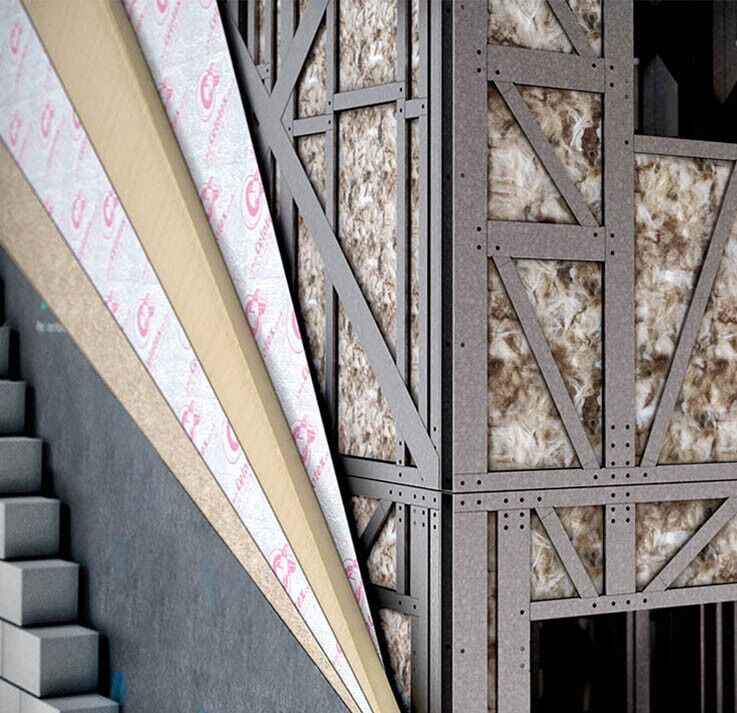Structural Steel Frames are no longer exclusively used only for skyscrapers and large commercial buildings, we use steel because its a modern, attractive building option with many benefits over traditional methods of construction such as timber frame.

Sustainability
Affordability
Durability & Resilience
JNCN Engineered
Speed
Lighter
Versatile
Less Waste
Innovative
Recyclable
This may seem surprising at first but the design of a steel I-beam will almost always result in a lighter and more structurally sound design than a wood beam design, weighing less than glulams, LVL and Parallam beams. In addition, a decrease in labor is required to build with steel compared with a wood. A lighter-weight advantage reduces material shipping costs and simplifies the design of a buildings foundation and other structural support systems, which can further reduce a projects budget.
Time is money, we understand the pressures to deliver buildings under budget and ahead of schedule. Fast-tracked projects can often become a nightmare for architects and trades people - namely because taking shortcuts can lead to unsafe building practices and a finished product that doesn't meet expectations. We aim to change this with the use of steel.
Our steel is JNCN Engineered to specific design tolerances inside our manufacturing facility. This speeds up construction time significantly, allowing completion of large-scale projects in a matter of weeks.
Fabrication of our steel frames are completed under highly controlled conditions, enables our project managers to place their attention on other issues. This eliminates the need for measuring and cutting on site. Our offsite processes ensure the element of human error is removed from the build equation. This reduces the amount of time spent assembling something only to find it needs to be re-measured, cut and installed again.
A faster construction timeline reduces the amount of time a development impedes traffic, affects the flow into and out of surrounding businesses and any water or utility disruptions to nearby buildings.
Our offsite build programme, and utilisisation of a steel framed superstructure enables a decrease in construction time, reducing labor and cost. Building with steel also saves money on other first time and lifetime savings.
Steel can be recycled. Our offsite build processes dramatically reduces construction waste. We are able to recycle our steel and metal building components rather than paying landfill fees for non-recyclable construction waste. There is increased public interest to decrease unnecessary construction waste, JNCN Homes have been designed to reduce this associated construction waste and improve our environmental impact over traditional construction techniques.
Steel is durable. Little maintenance is required. Maintenance fees, repairs and replacements are minimal. Even over the course of 60 years or more, saving building owners tens of thousands of pounds over the course of the buildings lifetime.
Innovation in steel. We have seen recent production enhancements in steel production to meet the rising demand for JNCN engineered steel, bringing prices lower than they've been in twenty years. "In 1980, 10-man hours were required to produce a single ton of steel. Today the same ton of structural steel requires substantially less than a single man hour." - American Institute of Steel Construction. These savings in cost are passed on to the consumer.
Resistance and Strength. Steel structures have an almost unrivaled ability to withstand high winds, heavy snow loads, fire and seismic activities as well as a resistance to pests and decay.
Faster. Reducing construction time significantly results in fewer interest payments to the lender, reduces on site disruption and enables occupation of a new build's much faster than traditional construction developments.
JNCN Homes utilises modern techniques and advanced materials, combining years of offsite construction experience to deliver one of the highest quality yet affordable housing products on the market.

Steel is made from recycled materials and can be recycled at the end of its lifespan. According to the Steel Recycling Institute:
80 million tons of steel are recycled each year, making it the world's most recycled product.
Since 1990, energy intensity per ton of steel produced has reduced by 28% and CO2 emissions by 35% per ton of steel.
Reductions in energy use and CO2 emissions are rapidly reaching the limits defined by the laws of physics.
Benefiting from other design enhancements, steel buildings are incredibly energy efficient. Connections between high-quality, prefabricated steel parts is so exacct that with the addition of adequate insulation, they are air-tight and comfortable, ensuring the building has a completely sealed envelope. Roof panels are primed and ready to host solar array and cool metal roofing products dramatically decrease solar heat gain, further increasing energy savings.
Advantages like these are only seen when the quality of the materials and the experience in manufacture and assembly work in harmony. When these elements come together, building owners benefit from an attractive and well -designed building that is both durable and sustainable.